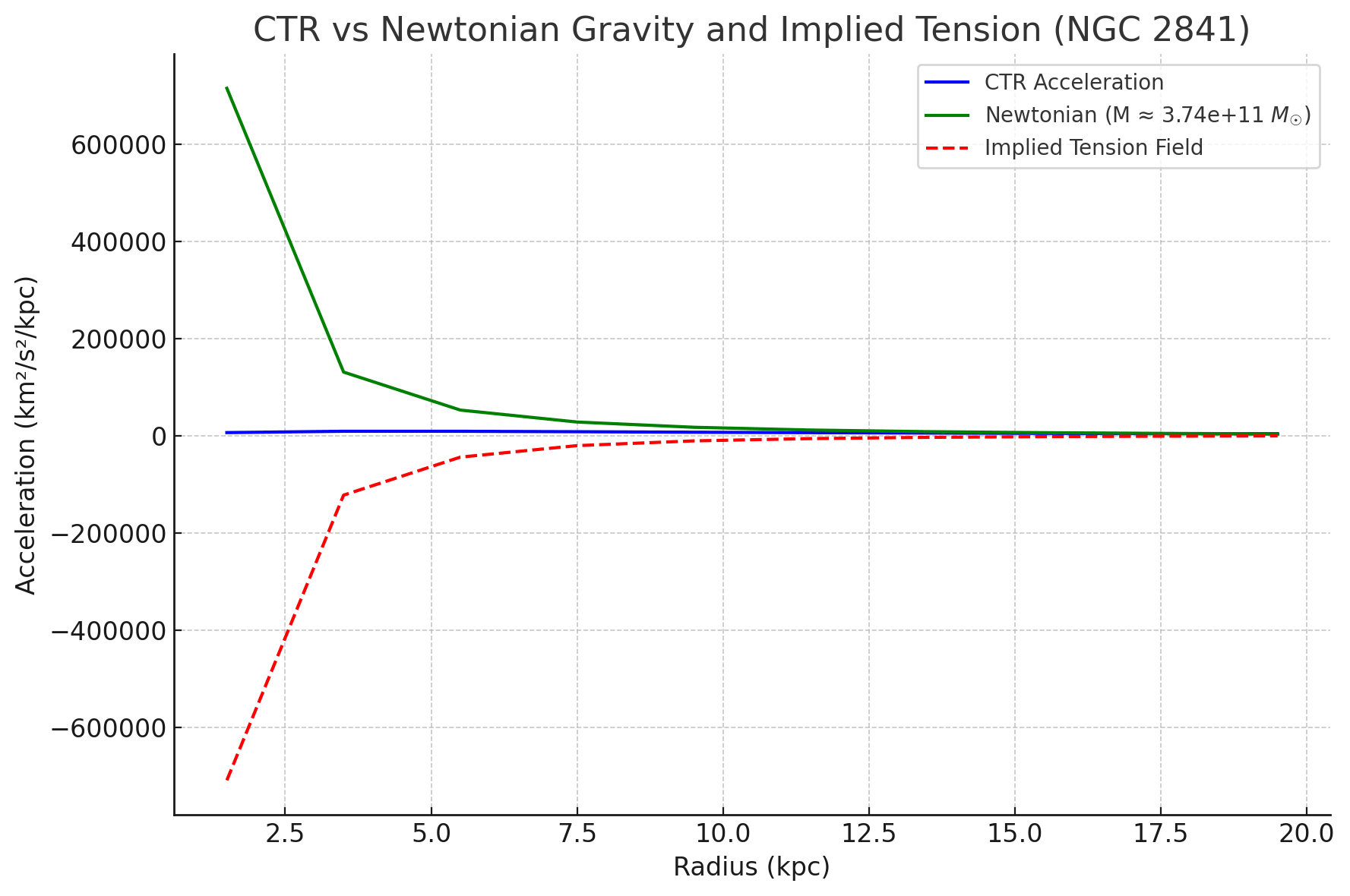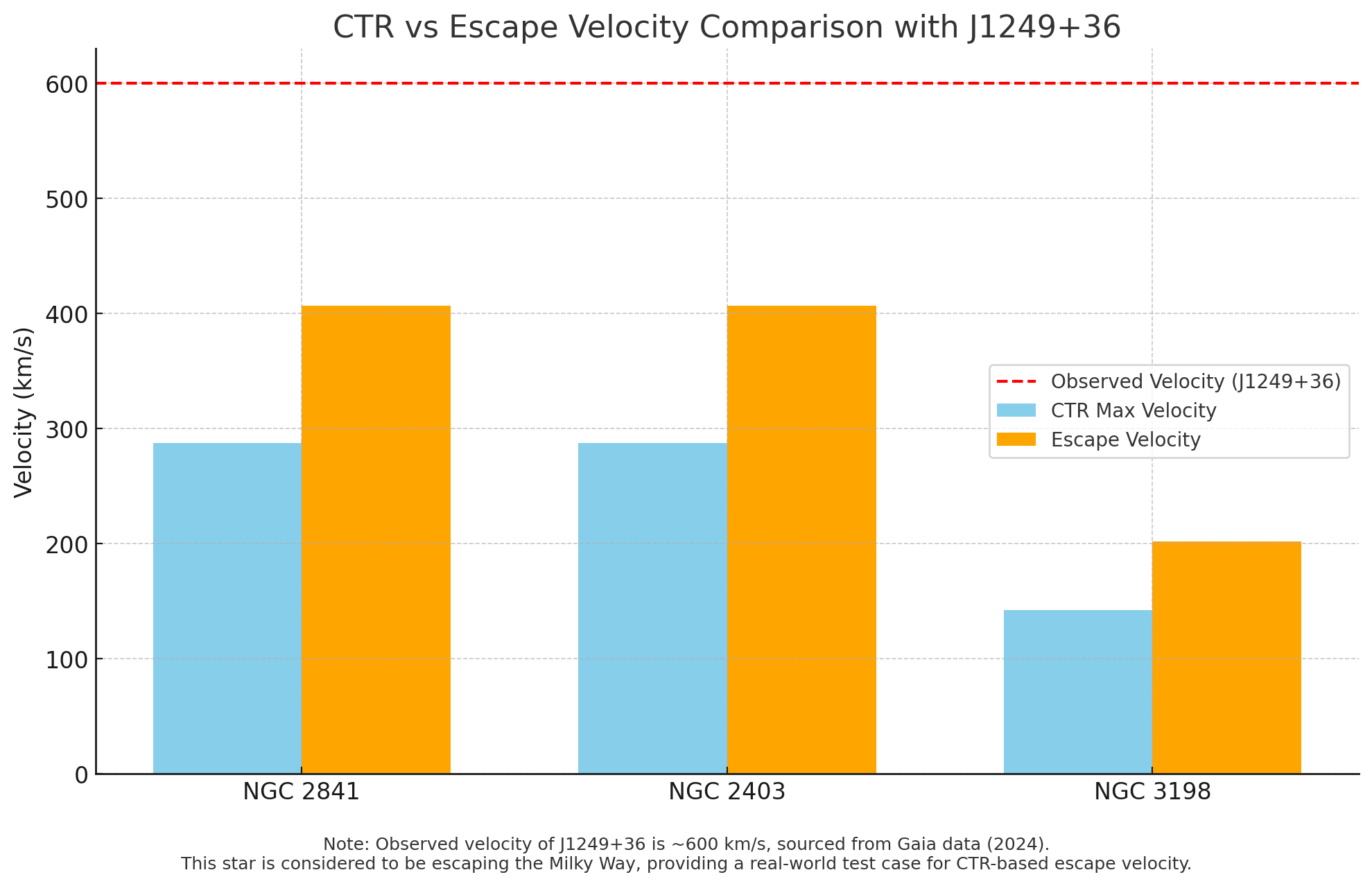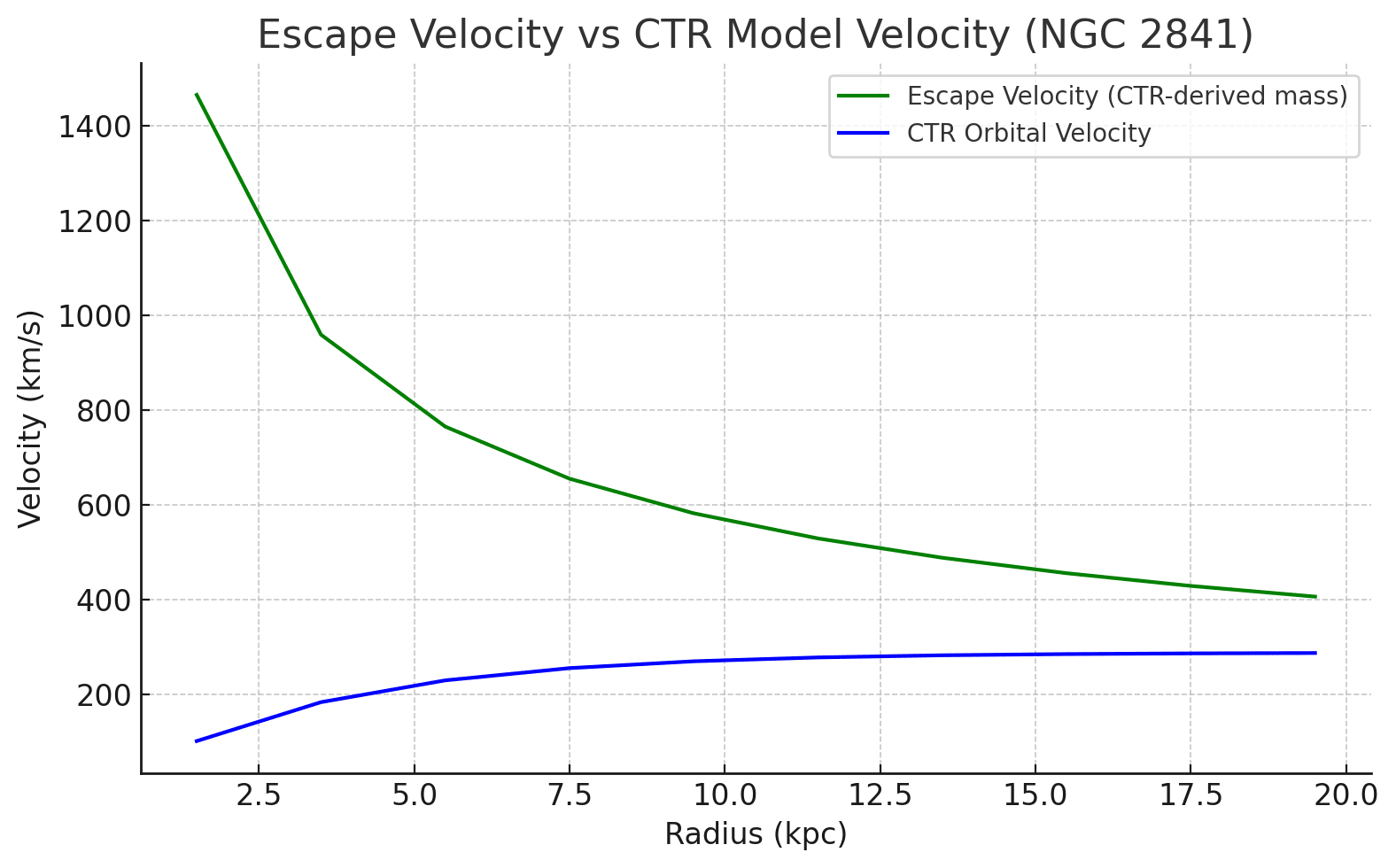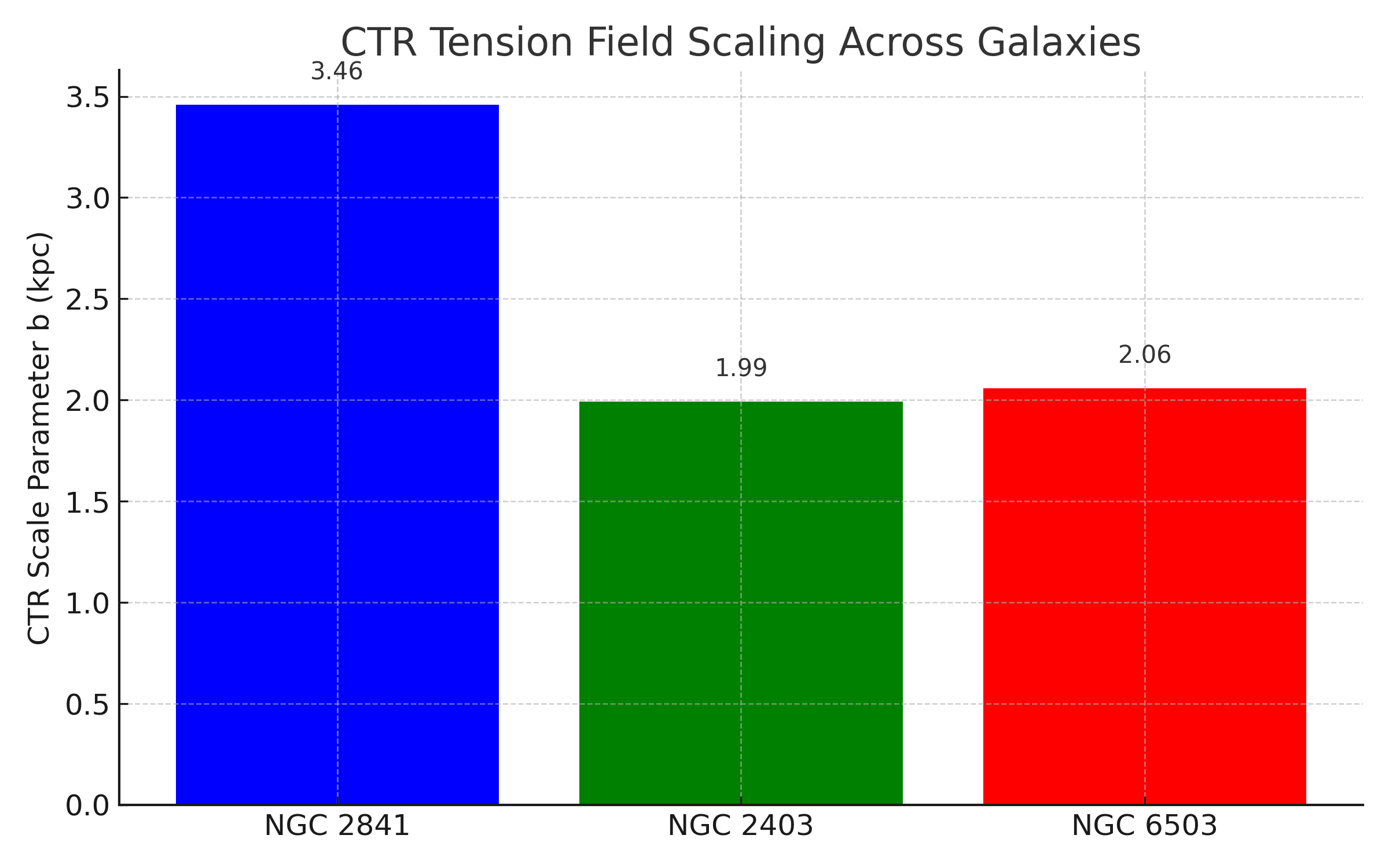Updated: Structural Validation of the Central Tensional Return Hypothesis (CTRH)
By KaedeHamasaki @ 2025-04-13T18:09 (–7)
I've released an updated version of the CTRH paper—a structural alternative to dark matter in galactic dynamics.
📄 OSF: https://doi.org/10.17605/OSF.IO/W4EZD
This new version integrates six refined figures based on galactic data (NGC 2841, 2403, 3198, and 6503), improving structural clarity, empirical consistency, and interpretability. It also includes additional subchapters focusing on escape velocity comparison and field scaling—providing sharper insights into CTRH’s predictive structure.
✦ What is CTRH?
The Central Tensional Return Hypothesis (CTRH) posits that galactic rotation curves flatten not due to hidden mass (dark matter) or force modification (MOND), but due to a radially symmetric structural field: a return-oriented tension field emerging from a cosmological center.
This tension field introduces directional predispositions in stellar motion, supplementing Newtonian gravity without altering its form.
✦ Key Updates in This Version
1. Zero-Crossing Profiles of CTR Tension
Figure shows the radii where CTR tension crosses zero—representing a structural transition from gravity-dominated to tension-dominated regimes.
2. CTR vs Newtonian Acceleration
Acceleration profiles are compared to reveal the implied tension field as a residual between CTR and Newtonian predictions.
3. Escape Velocity Validation with J1249+36
CTR’s orbital velocities remain well below the escape threshold, consistent with Gaia observations of the high-velocity star J1249+36 (~600 km/s).
4. Radial Escape Analysis (NGC 2841)
Confirms that across radius, CTR velocities are physically bounded by the escape curve derived from the baryonic mass.
5. Structural Scaling Across Galaxies
Comparison of the CTR field’s scale parameter 𝑏 suggests that its spatial reach varies by galaxy, possibly tracking baryonic structure.
✦ Structural Philosophy
This isn't just a new model—it’s a conceptual shift.
CTRH proposes a new causal chain:
Structure → Direction → Motion,
replacing the classical formulation:
Mass → Force → Motion.
Rather than force summation, CTRH interprets cosmic motion as a structural expression of anisotropic space.
✦ Feedback Invited
I’m especially interested in feedback on:
- How CTRH compares with MOND/dark matter in theoretical parsimony
- Potential extension to gravitational lensing or cluster-scale behavior
- The legitimacy of directional causality as a physical field structure
Let me know if you'd like a deep dive into the full English version—it's already complete and open access on OSF.
Jason @ 2025-04-13T21:14 (+5)
What is the connection between this topic and effective altruism?




